Plastics’ Societal Impact: Building Our Environments and Societies
It is easy to underestimate how the discovery of plastics has revolutionized the average human’s daily existence. While plastics gained widespread use in the early 20th century, the desire for a malleable material to create tools, art, and other objects is ancient in humans.
The earliest human beings possessed a mind primed to build and create and it is believed that even the early hominid species used organic materials to make tools [2]. Around 1600 B.C. the ancient Mesoamerican people used natural rubber to make balls and other items. These ancient communities processed latex from the plant Castilla elastica with liquid from the Ipomoea alba vine which resulted in improved elasticity compared to the raw latex.
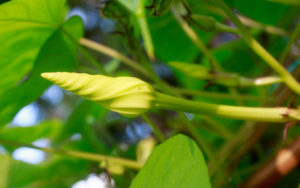
The Ipomoea alba plant improved the elasticity of the rubber for Ancient Mesoamerican people.
The ability to improve the elasticity of this material is what paved the way for the development of the Mesoamerican ball game – a core ritual in all ancient Mesoamerican societies[1]. Arguably more impactful, it paved the way for societies to understand that materials can be processed to manipulate their chemical and physical properties which in turn creates new materials.
Much like the ancient Mesoamerican societies, our modern societies find our social and economic structures very much influenced by the materials that are accessible to us. Through the development of plastics, we have been able to skyrocket the ubiquity of countless life-enhancing items. Due to the rarity of their materials, certain items were previously reserved for the most wealthy. With the introduction of plastics, they could now be enjoyed by general society.
Changing Perceptions: Great Equalizer to Global Threat
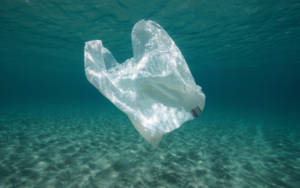
Single-use plastic bags – one of the most banned items of its category.
Initially celebrated for affordability, durability, and general improvements to daily life throughout the mid-20th century, concerns about the environmental impact of plastics began to gain traction in the 21st century.
Despite the decades-long concern, scientific data, and global movements towards governmental legislation banning the use of the more senseless plastics (ie. single-use plastics), our globalized world simply has not been able to sever the dependence on plastics. Deeply engrained consumer behaviour and economic interests pose a significant hindrance among many others in mitigating harm caused by the way we produce and consume plastics.
Thunderbird Plastics’ Approach: Recognizing Our Responsibilities to You
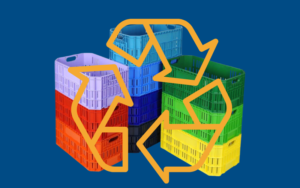
Thunderbird has been able to align innovation, company growth, and environmental sustainability.
At Thunderbird Plastics, we want to communicate that the realities of plastics – both the pros and cons – are not equal for all plastics. Our company does recognize that, in certain applications, plastic is second to none. This is why we have chosen to engineer our products using High-Density Polyethylene (HDPE) – a material that is safe for food, durable, and highly recyclable. We have managed to not only introduce sustainability in our supply chain but also in our local environment through our wash-and-chop recycling process. Thunderbird is proud to be able to take back any of our products at the end of their useful life and recycle the material into new products. While countless data support the societal concern regarding plastics, Thunderbird is proud to be able to use this material responsibly. This is due to both our willingness to do so and the physical and chemical properties of the material of HDPE. HDPE is chemically inert, highly recyclable, and incredibly durable due to its unique properties.
HDPE: Beginnings, Development, Many Pros
Invented in 1953 by Karl Ziegler at the Kaiser Wilhelm Institute, the initial process for the creation of the polymer known as polyethylene involved using a mixture of chemicals with the ability to cause the hydrocarbon gas ethylene to form a dense polymer at atmospheric temperature. This method performed at atmospheric pressure was further developed by Italian chemist Giulio Natta to become known as the Ziegler-Natta Catalyst. Since then, various high-pressure polymerization methods have been developed to change the properties of the final polyethylene product [4].
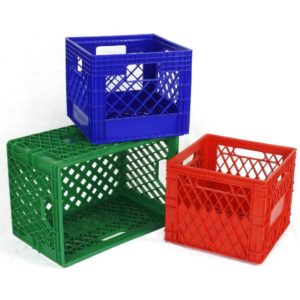
Our crates come in various sizes with primary usage as top-quality dairy and juice crates and secondary appeal as strong storage and transportation cases.
The nature of HDPE sets it apart and that is why it is so ubiquitous in our world today. It is present in industries like construction and plumbing where its applications require resistance to impact and fluctuating temperatures. This material allows our clients use products like our top-quality milk crates or our Nest & Stack berry tray to safely store their product inside of freezers. The exceptional chemical and physical attributes of HDPE allow us at Thunderbird to create superior injection moulded plastic products that can withstand tough conditions where temperatures may fluctuate quickly.
HDPE is a thermoplastic polymer. This makes it different from thermosets and elastomers because the long-chain molecules are linearly bonded to each other but also are bonded by a secondary Van Der Waals force which is overcome with heat and re-formed when temperatures lower again with no molecular degradation [5]. The ability to heat and re-shape this material many times is crucial to our innovation as well as our sustainability practices here at Thunderbird Plastics.
The physical properties of HDPE, including stiffness and high tensile strength, result from how the molecules are physically organized. The linear arrangement of the molecules and the resulting low branching enhances the crystalline properties of HDPE while the strong primary forces between the molecules contribute to the impressive tensile strength.
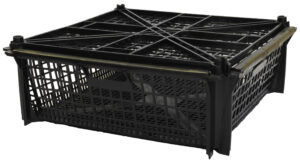
Our Shellfish cultivation and harvesting tray with lid.
HDPE in Action at Thunderbird: Fishermen’s Baskets, Plastics Lugs, Berry Flats and More
Our product lineup is intended for a wide range of industrial applications where having the proper equipment means more profit. Our fishing basket and shellfish cultivation containers need to be able to withstand extreme weather and fluctuating temperatures. Our plastic pallets and our plastic garbage cans need to be able to withstand being often moved by heavy machinery. Our agricultural containers, milk crates, and berry trays need to be able to withstand UV exposure and not leach into, or react with, the food products. Our canning sleeves for construction need to be able to have a reliably rigid structure. This is why the Thunderbird Team has chosen HDPE to be the material behind their injection moulded industrial plastic product lineup.
Talk to our sales team about any of the products in our products section OR about bringing your idea to life.
References:
- Hosler D., Burkett S. L., Tarkanian M. J. (1999). Prehistoric polymers: rubber processing in ancient Mesoamerica. Science, 284, 1998–1991. doi:10.1126/science.284.5422.1988
- Zimmer, C. (2005). Smithsonian Intimate Guide to Human Origins. Toronto: Madison Press Books.
- Westerhoff P., Prapaipong P., Shock E., Hillaireau A. (2008). Antimony leaching from polyethylene terephthalate (PET) plastic used for bottled drinking water. Water Res., 42, 551–556.
- Mehmet Demirors. “The History of Polyethylene.” In 100+ Years of Plastics. Leo Baekeland and Beyond, Chapter 9, pp 115-145. ACS Symposium Series, Vol. 1080. American Chemical Society, November 4, 2011. DOI: 10.1021/bk-2011-1080.ch009. ISBN: 9780841226777, eISBN: 9780841226784. Copyright © 2011 American Chemical Society.